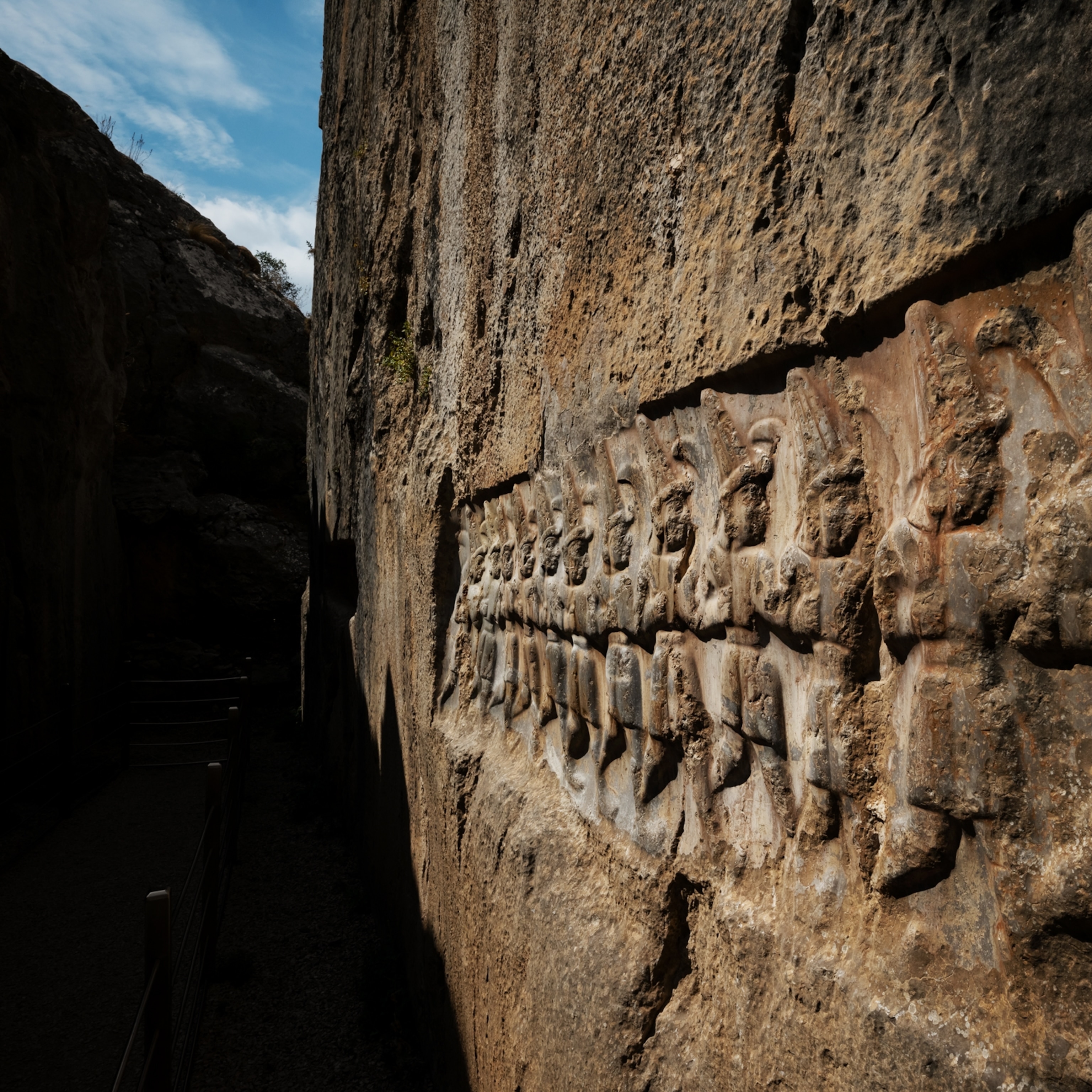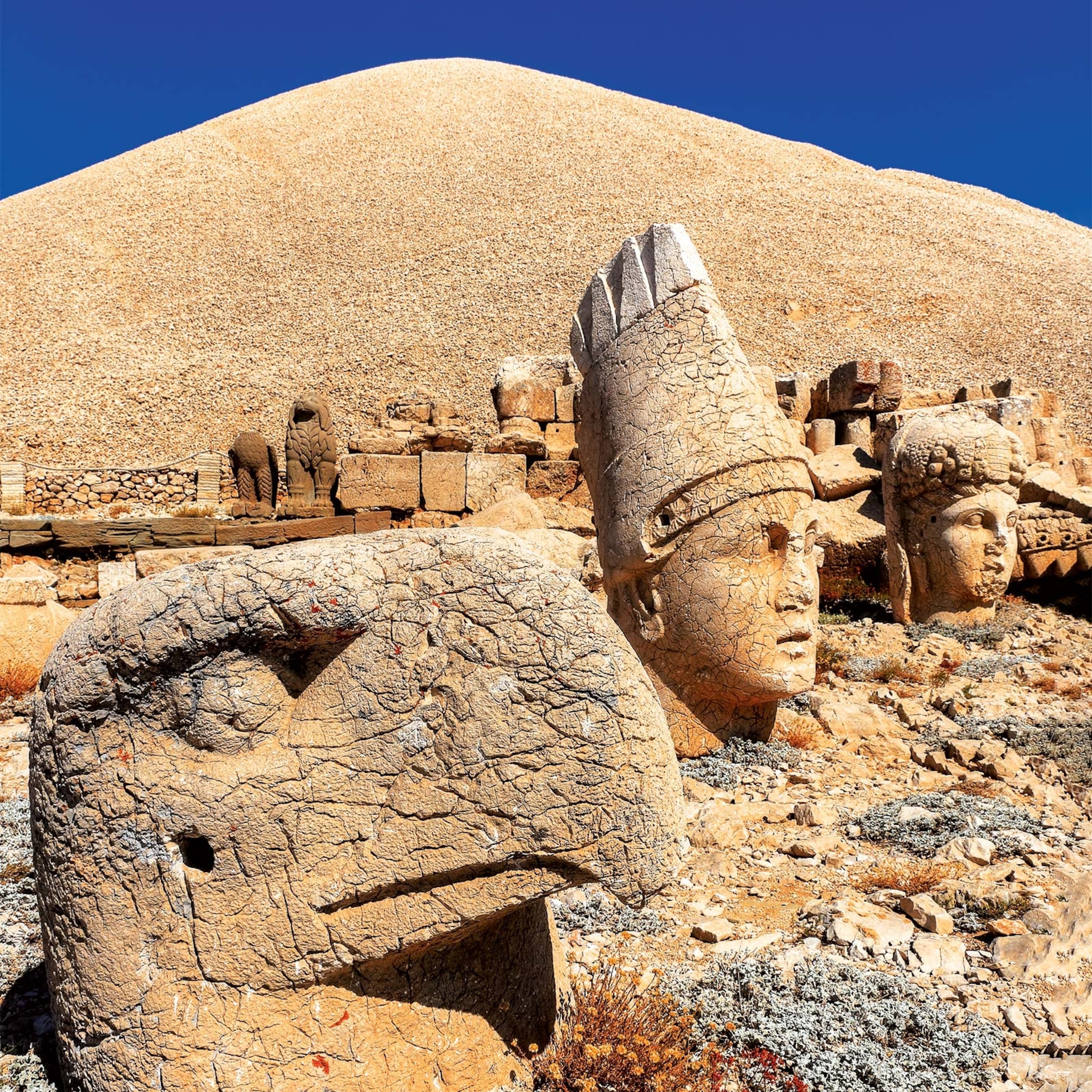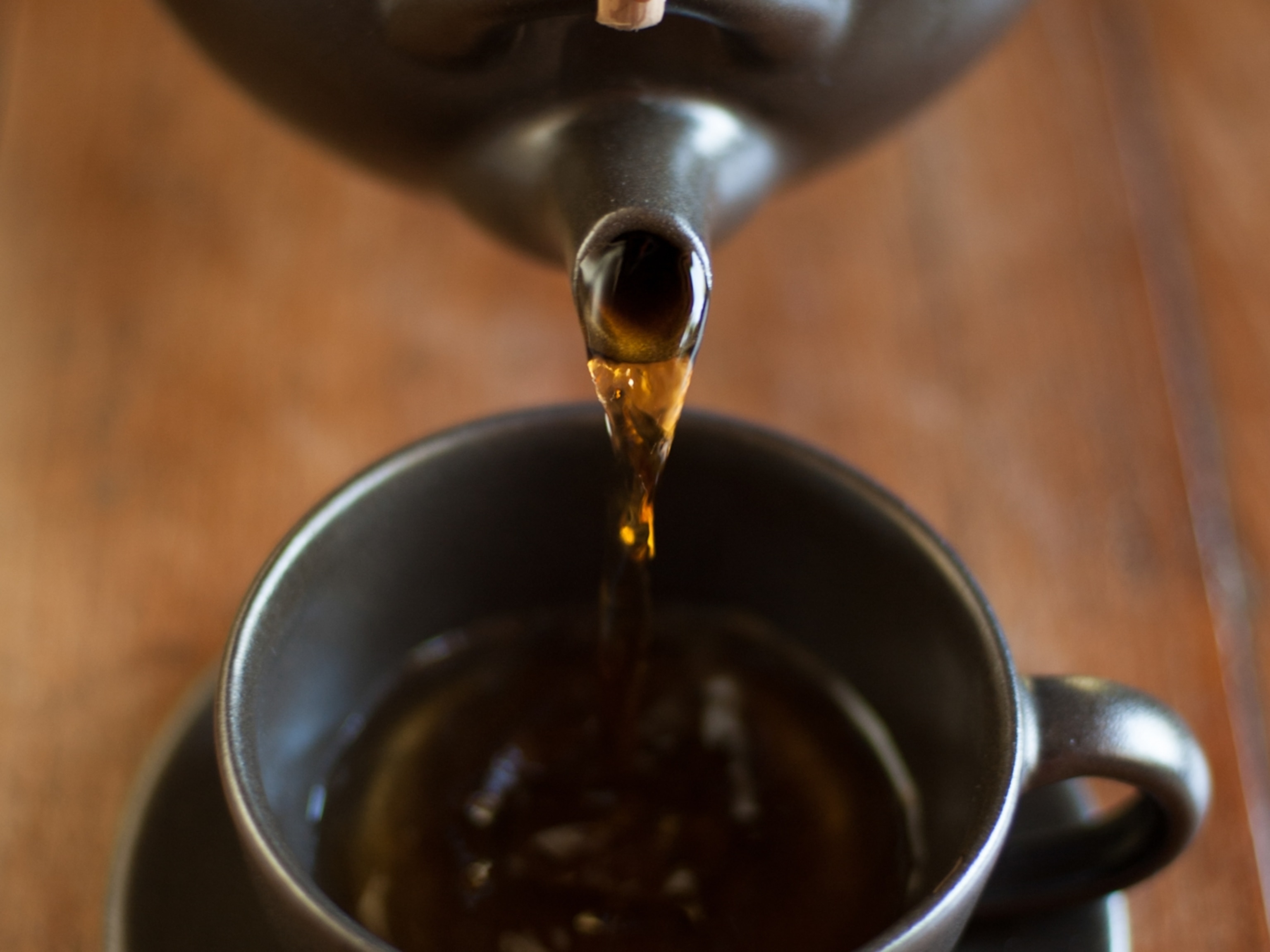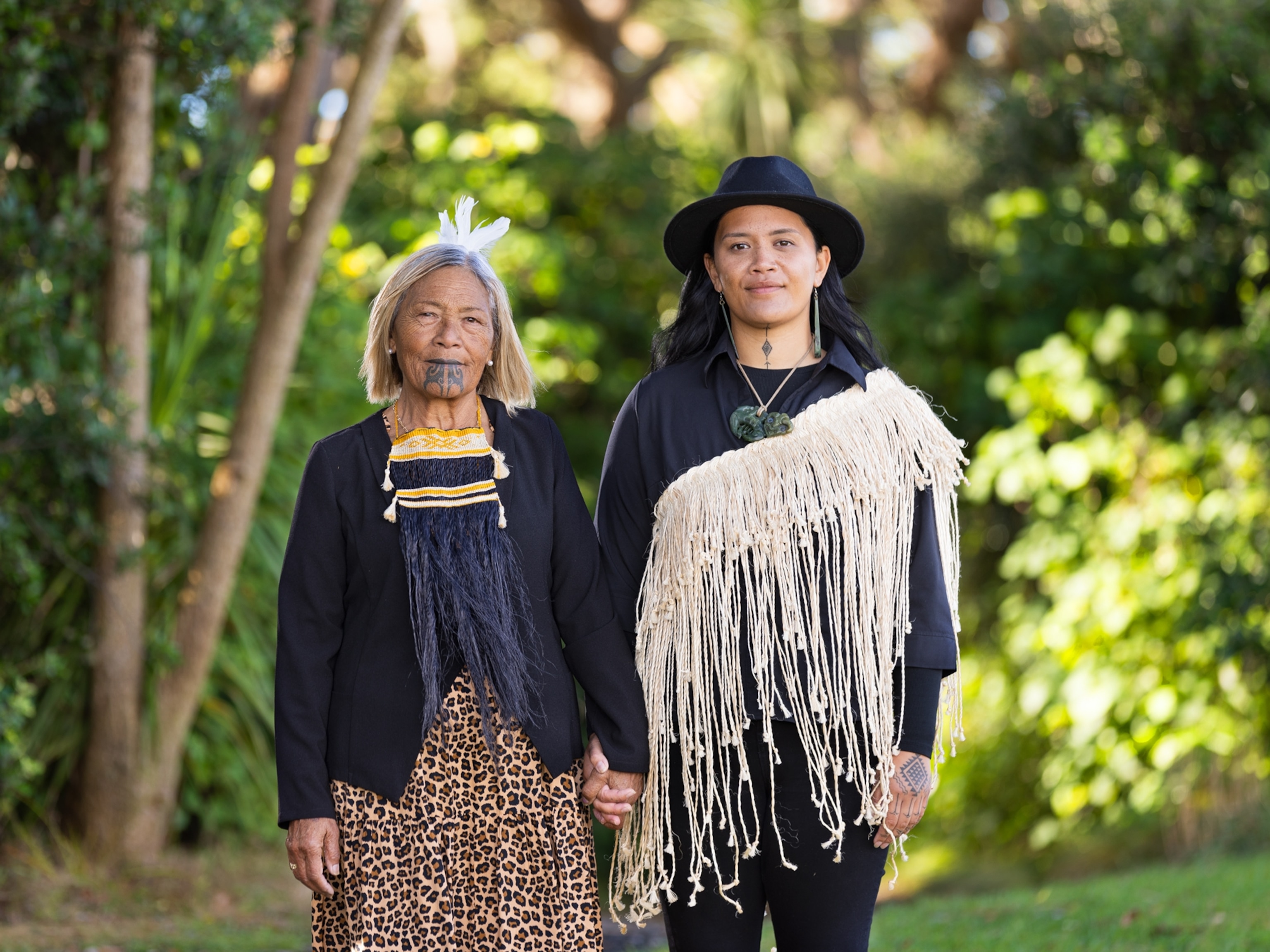The world's oldest trees are producing some of the most luxurious tea
High on a mountain in China, Indigenous tea growers are using ancient techniques to create a premium tea that has never been more popular.
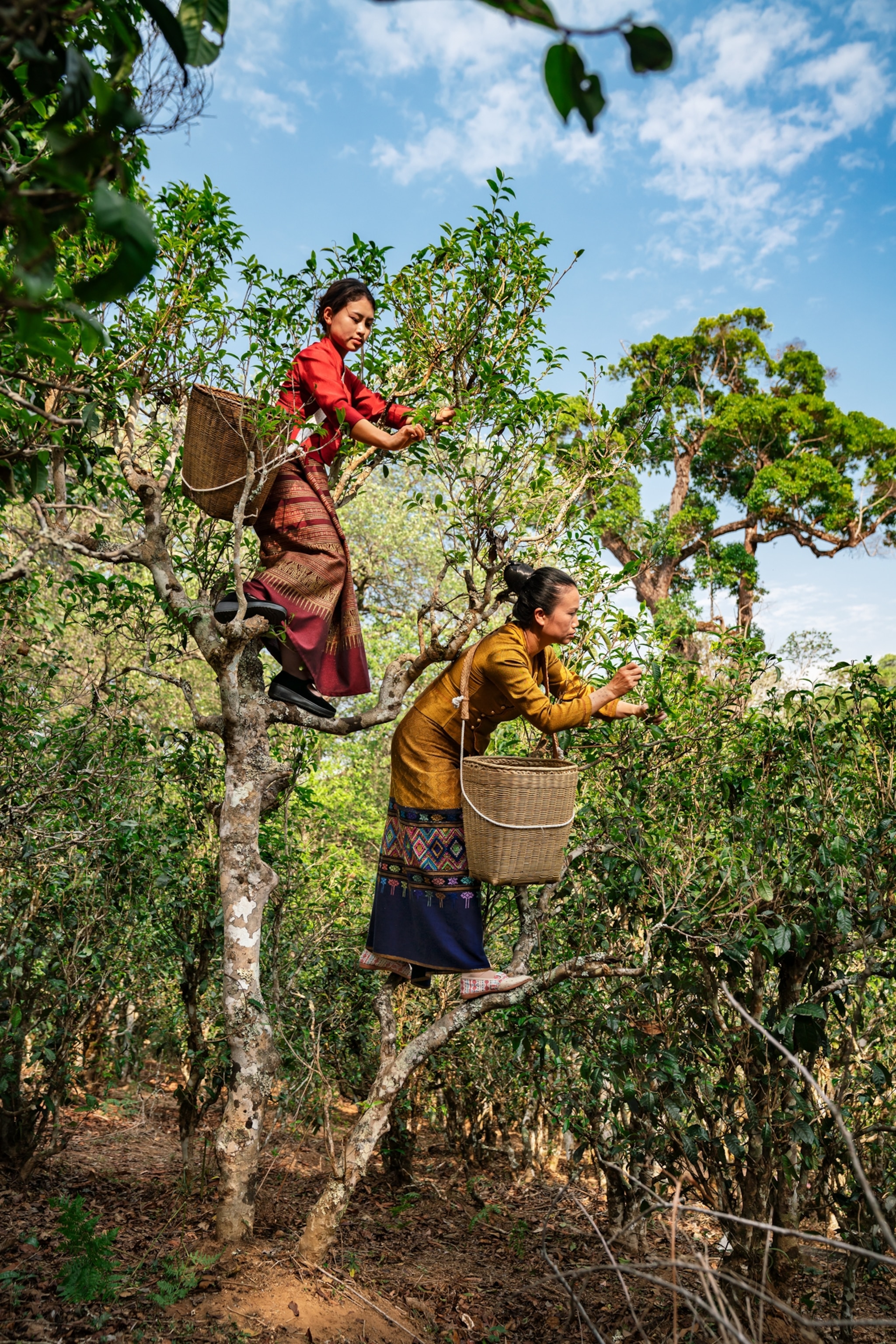
In a high-elevation forest on Jingmai Mountain, dawn broke over a green peak, bathing an ancient tea tree in warm light. A four-foot-wide trunk along with enormous branches, stretching up into a canopy of leaves, gave it an imposing bearing—nothing like the smaller tea shrubs often packed into tight rows on commercial farms throughout China. But this tree, deep within the southwestern Yunnan Province, was different. And it served a different purpose altogether.
A married couple named Ai Rong, 41, and Ke Lanfang, 36, had gathered with their elderly parents in front of the tree, chanting a prayer in the Blang people’s language, spoken by the Indigenous community throughout this region where five tea forests—collectively the oldest and largest on the planet—are cultivated. To the untrained eye, the tree might have been merely part of a forest. But for the family, it was the heart of a living shrine: They prayed to their Tea Spirit Tree, asking an ancestor named Pa Aileng, now considered a deity, to deliver a strong harvest. “It’s a thousand years old,” Ai said proudly, pointing to the tree’s large trunk. In recent years, however, his faith has seemed to be continually tested. At a time when the region’s highly specialized tea has gained widespread attention, commanding impressive prices, there are ever more unpredictable natural forces to contend with.

Tea is the world’s most popular beverage after water. Globally, people drink an estimated 45 billion gallons of it each year in a wide range of styles, from green to black and oolong. While these varieties exist because of different processing techniques, they all originate from the same fundamental ingredient: Camellia sinensis. The species of flowering evergreen has traveled the world, most notably when the colonial British brought it to India in the early 19th century, breaking China’s monopoly.
(Each type of tea has different effects: What's your perfect cup?)
Today, however, one specific style remains inextricably tied to Jingmai Mountain. For more than a millennium, the Blang people, along with another Indigenous group called the Dai, are believed to have continuously maintained these ancient groves of Camellia sinensis var. assamica, a subtype that produces black tea, including the mountain’s dark, rich Pu’er tea. The coveted blend has been referred to as a “drinkable gold” among some tea connoisseurs, in part because many producers ferment it for a minimum of 10 years, which creates a deeper flavor and increases its worth. Among China’s growing affluent class, the nutty, earthy, and slightly bitter concoction has been compared to fine wine. It softens and becomes more complex—and collectible—with age.

Ai and his family own a plot of about 4,000 trees but had spent years struggling to earn a profit. Then in 2015, they decided to partner with a premium brand that sells high-end Pu’er. They now run a farming collective that employs workers throughout the area to help process tea from 37 different households, yielding about one ton of product annually. The Pu’er is pressed into circular cakes and aged, then packaged and sold for $330 per 12.6-ounce cake. Within Jingmai, the average income is significantly higher than it was two decades ago. For Ai and Ke, such gains and their entrepreneurial success have led to a combined income of around $40,000 a year, more than the average household in the nearby city of Humin.
Two years ago, UNESCO formally recognized Jingmai Mountain as a World Heritage site, an honor reserved for places that provide unique cultural value. It is the only site related to tea cultivation. Perhaps not coincidentally, the price of tea from Jingmai has roughly doubled since the idea of a certification was introduced more than a decade ago.
The region’s 6,000 residents use natural practices to manage 3,900 acres with over a million trees. But their model of sustainability is facing new stresses from climate change. In the spring of 2024, the region was coping with its most severe drought in 60 years, and an unusually warm winter had brought an unexpected caterpillar infestation to the peak that Ai’s family was praying on, threatening the precious tea leaves just before harvest.
(Walking in the footsteps of China’s historic caravans of tea porters.)
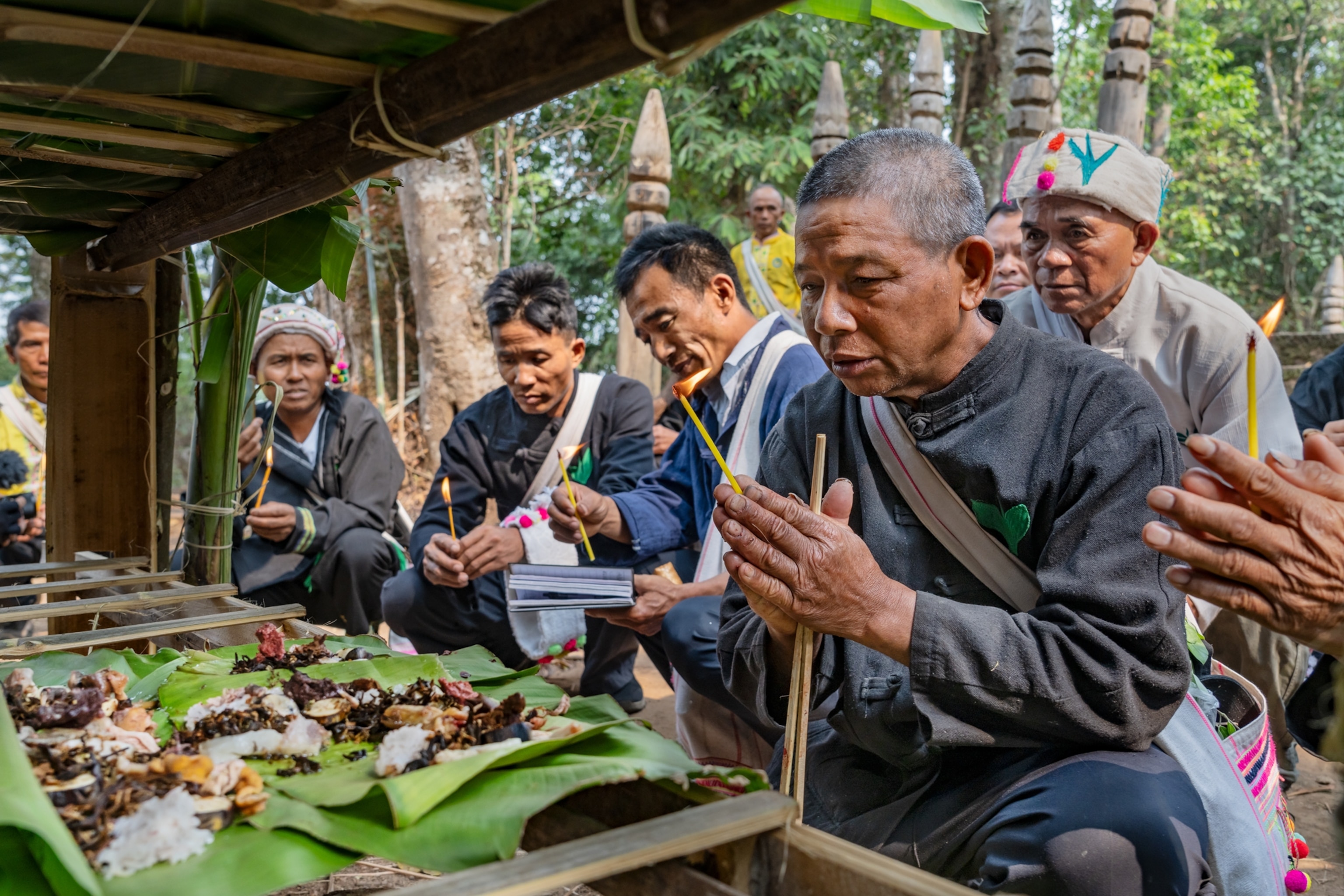
The Blang people’s tea spirit is based on a real person. Around the 10th century, according to oral history, Pa Aileng led his people to settle in Jingmai, where he discovered the medicinal properties of wild tea plants and began to domesticate them. Near the end of his life, Pa imparted wisdom that’s still recounted by farmers like Ai and Ke.
“I can give you cattle, but they might die of diseases,” Pa is remembered to have said. “I can give you gold, but you might squander it. So I am going to give you tea trees, which can provide riches for generations.”

Jingmai’s closely managed lands may appear untamed in contrast to terraced monoculture tea plantations seen throughout the world. But the canopy of trees provides shelter for tea plants that grow best in shade. A vibrant understory of ferns and herbs carpets the forest floor, fostering a rich habitat for fauna while helping the soil retain vital moisture. The tea plant sanctuaries are also divided into distinct pockets, strategically partitioned by forest that separates one plot from another to stop the spread of diseases and pests.
(Why tea drinkers live longer.)
The Blang people believe that everything has a soul, a reminder to leave nature undisturbed, so in tending the forests they avoid pesticides and herbicides as well as aggressive practices such as pruning. Ke cuts grass between the trees only twice a year and with a knife.
New research shows the agroforestry techniques practiced in Jingmai continue to be effective. A recent study by Minzu University of China found that tea produced from the mountain’s high-altitude trees was less bitter than tea cultivated from trees at lower altitude. And the sustainable farming methods support a significantly higher biodiversity than commercial tea gardens. Jingmai tea’s current price is about 6.5 times higher than that of typical plantations.
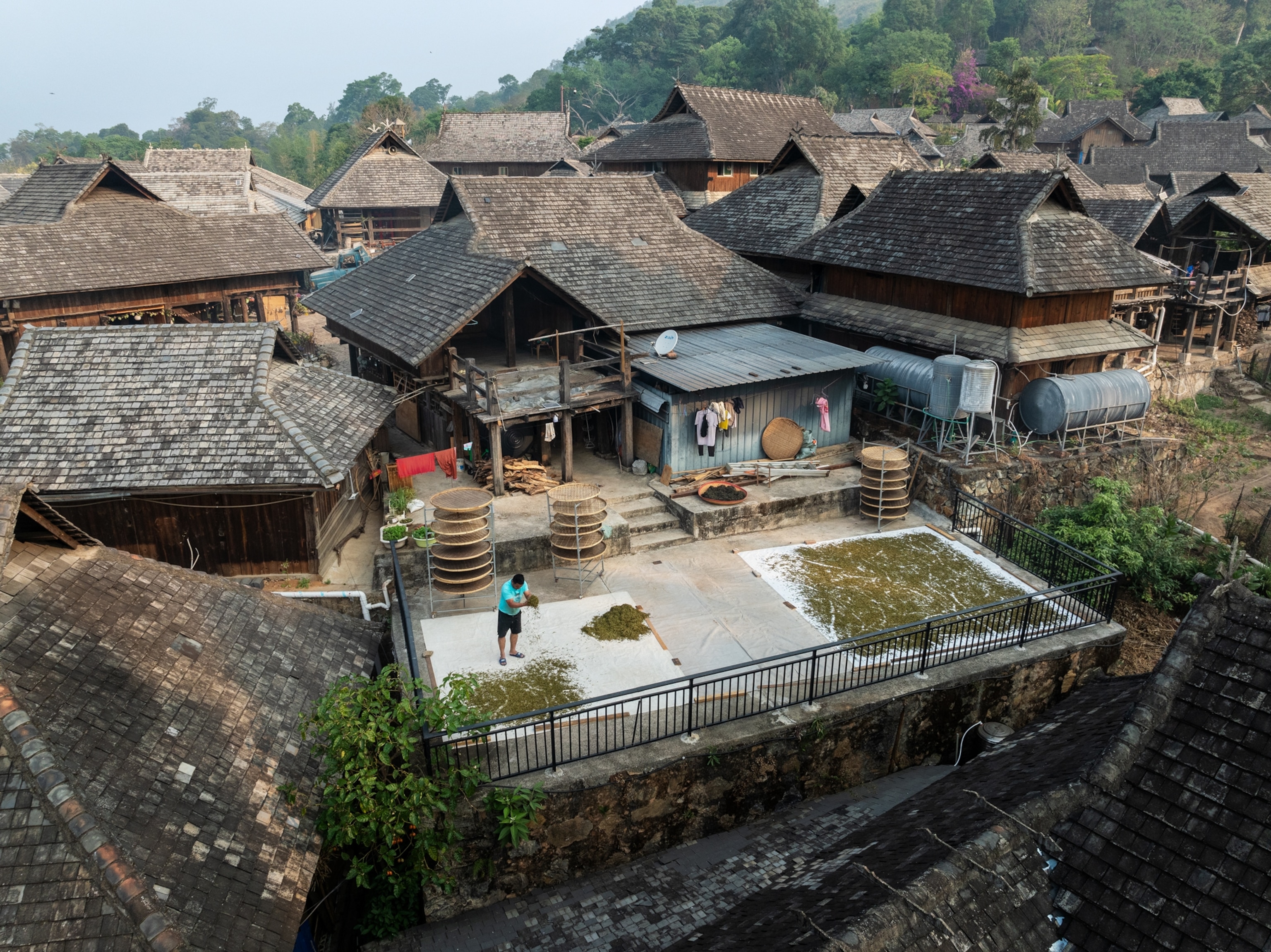
Despite his family’s owning thousands of venerable tea trees, Ai lived in poverty during his childhood because demand for their product was nonexistent. During the second half of the 20th century, China’s focus on mass production from high-yield, large terrace plantations left little room for the old trees’ labor-intensive harvests. While growers across other Yunnan tea mountains razed their ancient groves to plant younger, more productive trees, the people of Jingmai remained steadfast in protecting their arboreal treasure. Their commitment was reinforced by practical constraints: Without modern roads, their old trees were ill-suited for mass production. The Indigenous communities persevered with their seemingly unkempt forests.
Jingmai’s fortunes changed around 2000, when the Chinese government invested in new roads and electricity for rural areas. Slowly, new tea buyers began to arrive at the mountain, even as increased access led to more challenges. Some villagers destroyed parts of the forests to harvest timber for new construction; others applied harmful chemicals to their trees and pruned aggressively to boost profits.
By 2003, Su Guowen, a retired primary school teacher who claims to be a descendant of Pa Aileng, felt the need to act. At community meetings he invoked Pa’s purported instruction to protect the forests “like your own eyes,” arguing that the continued preservation of ancient practices and traditions would bring growers long-term benefits, even if they had to sacrifice short-term yield. Village chief Ai Sen also rallied the Dai people to protect their crafted biospheres. Both pushed for bans on clear-cutting and chemical use.
Around 2010, that movement gained more speed when village elders joined forces with the Chinese government to petition for World Heritage status. As part of the government’s push, authorities put a checkpoint on the single road leading up Jingmai Mountain to stop people from bringing in non-native plants and animal species, built a road using stones rather than asphalt, which might disrupt the aromas of the tea, and formally restricted construction and deforestation in the area.
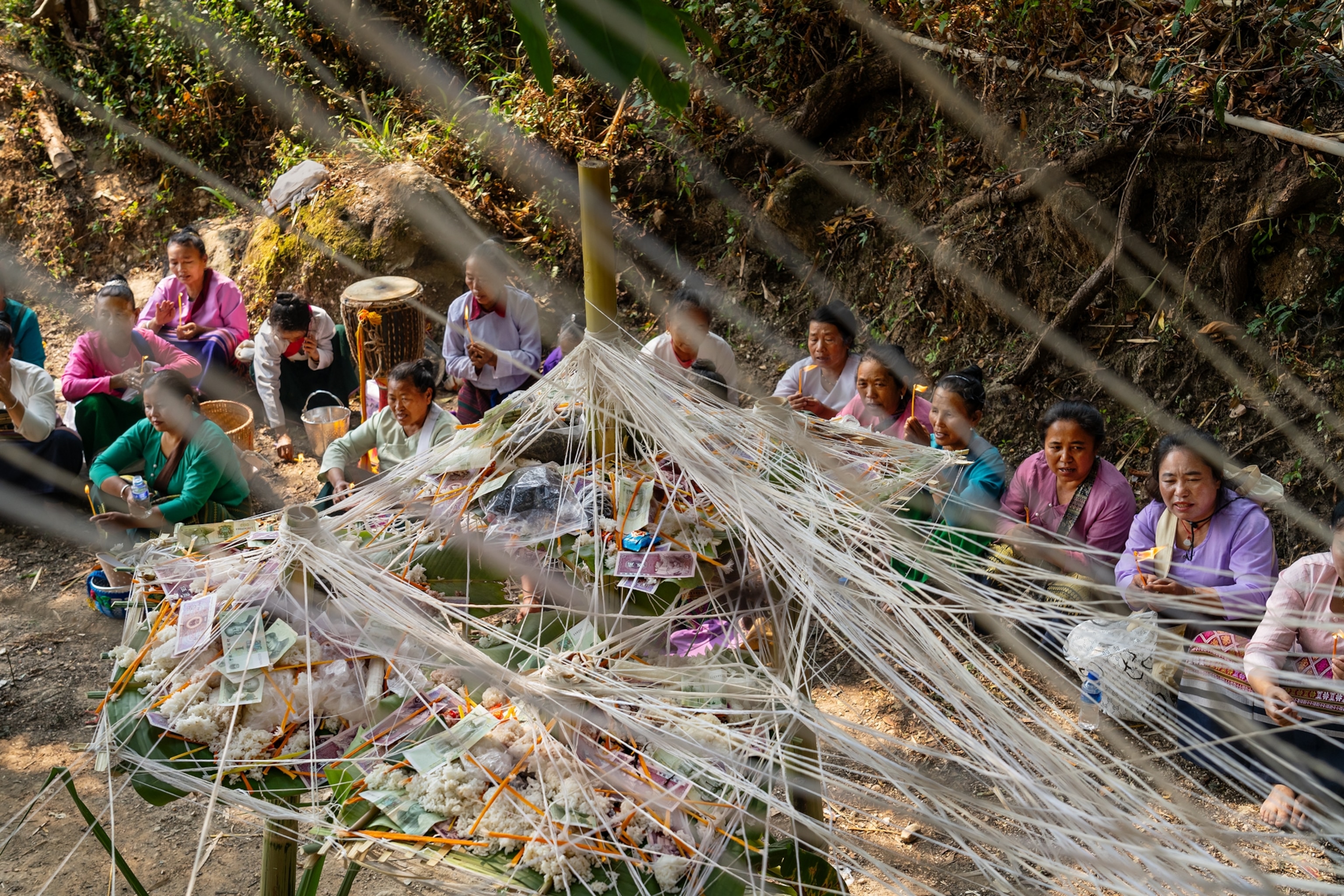
Zuo Jing, a professor at Anhui University, joined the effort to help document the area’s distinct cultural heritage. His government-funded team also built eco-friendly model homes to demonstrate how some modern technologies vastly improve sanitation, heating, and power while preserving the ancient architecture, something the community quickly adopted. “Jingmai Mountain is like an old tea tree that has both a unique history and a powerful contemporary life force that continues to grow,” he says.
(Rediscovering China’s ancient Tea Horse Road, a branch of the famous Silk Road.)
Around the time of their family’s prayer ceremony, Ai and Ke joined the spring harvest, performed with age-old, meticulous attention. Members of the Blang, Dai, and other groups wore lightweight shoes and carried large baskets gently slung across their shoulders as they carefully moved through their rugged parcels, scanning the ancient trees for the most tender shoots before carefully stepping over different branches to handpick them. This ensured nothing would be crushed and the dried leaves could unfurl into a beautiful shape when finally brewed.
Once their basket brimmed with fresh leaves, Ai and Ke returned home to start the intricate transformation process. They set out leaves to wither slightly while Ke prepared firewood for the crucial steaming, or “killing green,” step, which would stop decomposition. Ai tossed the leaves in a hot wok, arresting oxidation, and the room filled with a pleasant nutty aroma.
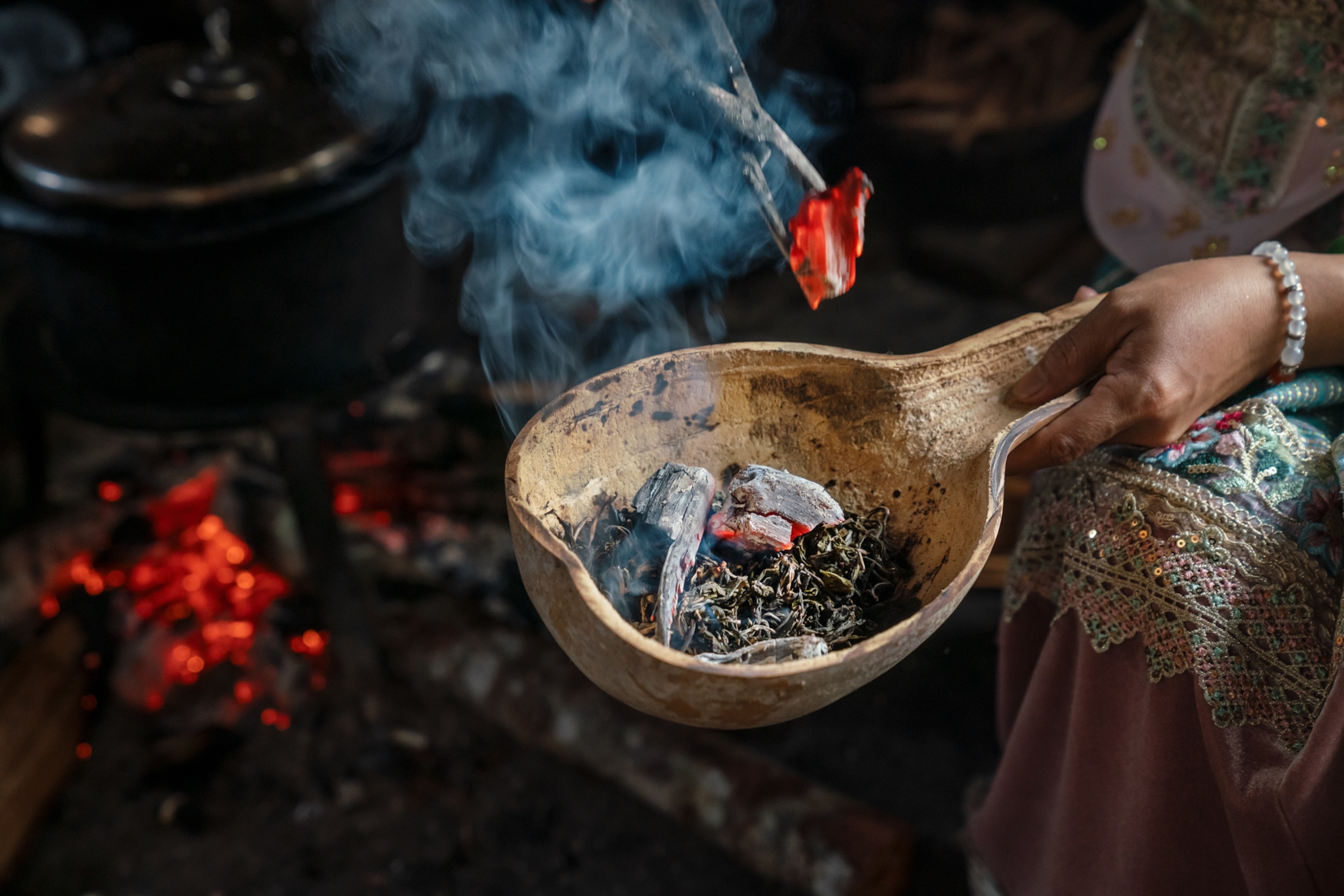


As the leaves cooled down, Ke began the delicate step of hand-rolling, gently twisting each leaf to rupture its cells and release more flavor. After the leaves were carefully set out to dry, the tea was ready for pressing, packaging, and aging. This process yields new Pu’er, a tea that still requires about a decade or more of maturation to reach its peak.
The 2024 harvest was significantly impacted by the drought, even though it had been saved by some labor-intensive techniques. When the pest infestation broke out, Ai, Ke, and countless others worked tirelessly picking caterpillars from the most important trees by hand for weeks. The infestation did not spread to other parts of the ancient forests, lending credence to the effectiveness of the partitions planted by the ancestors.

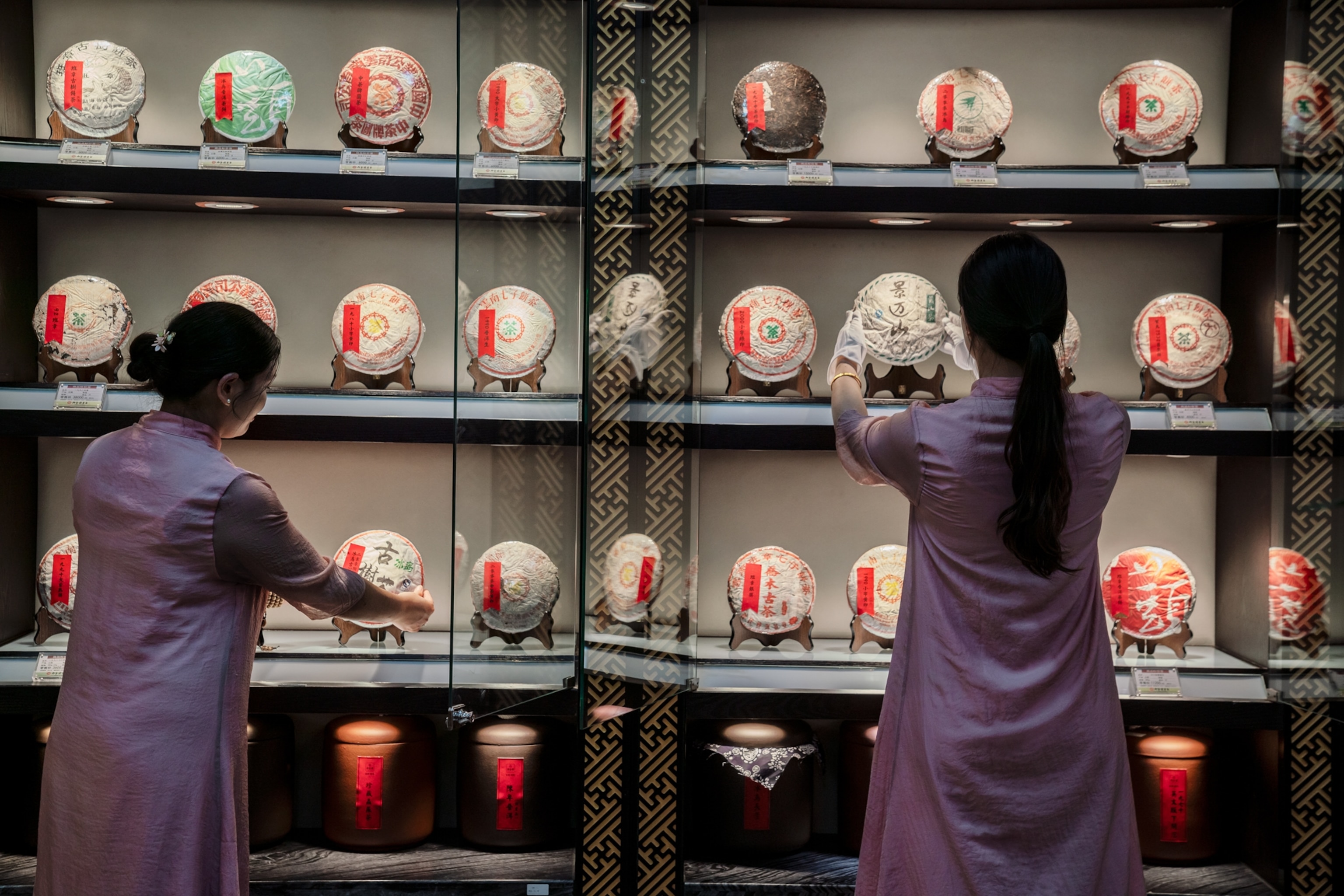
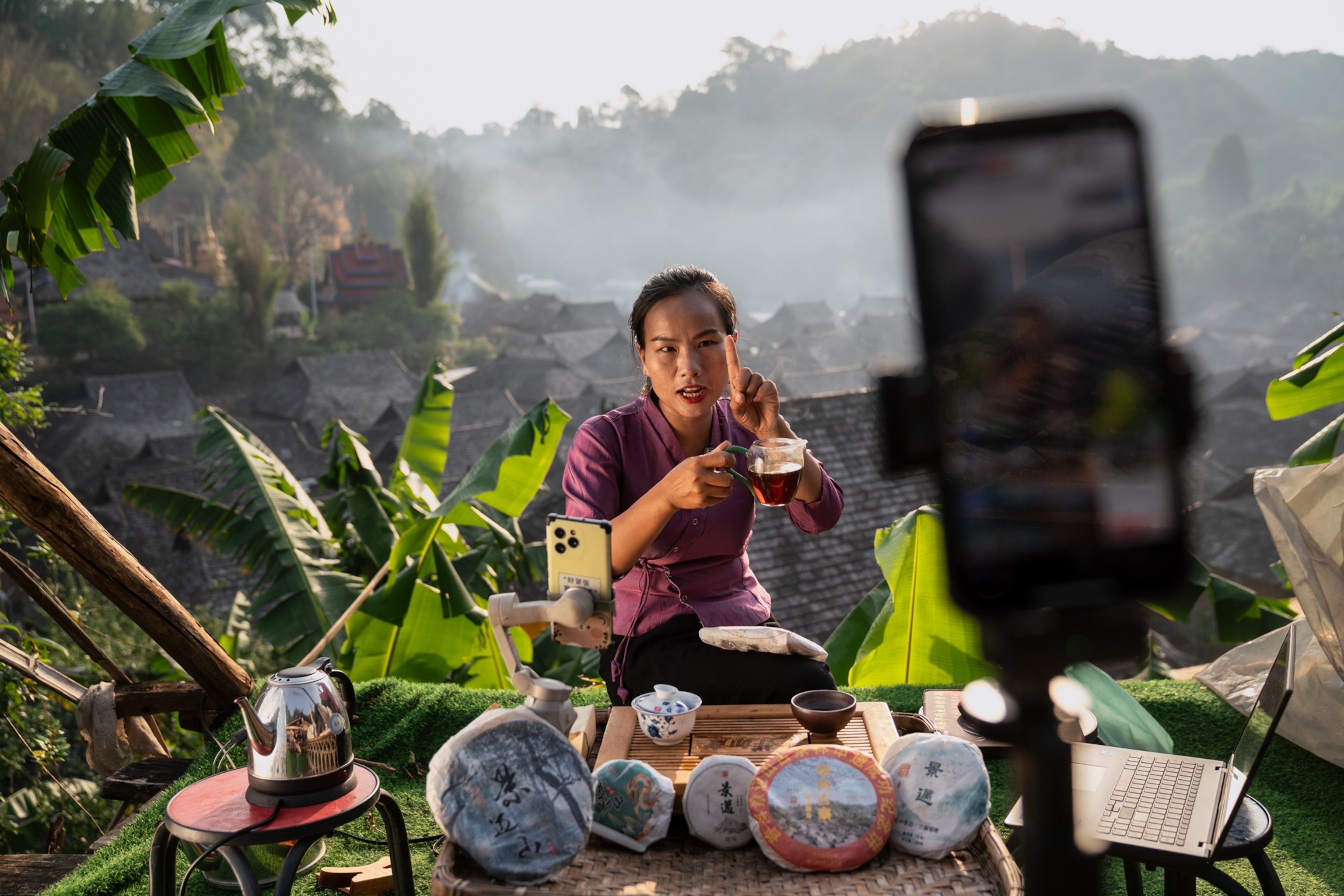
In recent years, Ai and Ke have renovated the ground floor of their wooden home to host tea ceremonies for potential buyers, pouring graceful, unbroken ribbons of Pu’er into porcelain cups. But their story is just one example of how the market for Jingmai tea continues to flourish. Today 90 percent of the region’s income comes from tea. The younger generation even live streams tea tastings to a growing audience of digital devotees across China. And residents in the villages of Wengji and Nuogang—cited by UNESCO as architectural gems—have turned their traditional wooden houses into charming shops. Some have built temperature- and humidity-controlled warehouses to store tea cakes, a nod to their increasing value and a bet that, in time, they might evolve into valuable antiques. Last May, a rare tea cake from the province, estimated to be from 1917, fetched an astonishing $448,057 at auction in Hong Kong.
Meanwhile, it seemed as if the dry spell would continue, so growers leaned into traditional beliefs to strengthen their resolve. Blang village elders tried to read chicken bones studded with toothpicks, an ancient divination ritual for climatic guidance. Members of the Dai community, which has different religious practices, implored the Buddha to intervene.
The first downpour finally began in May, saturating the soil beneath the shady canopy. The rain swelled into a deluge as summer began. Jingmai remained resilient, as if by some larger design.
(You actually can consume too much caffeine. Here are the risks.)
Justin Jin, a Hong Kong–born photographer and writer, became a National Geographic Explorer last year.


